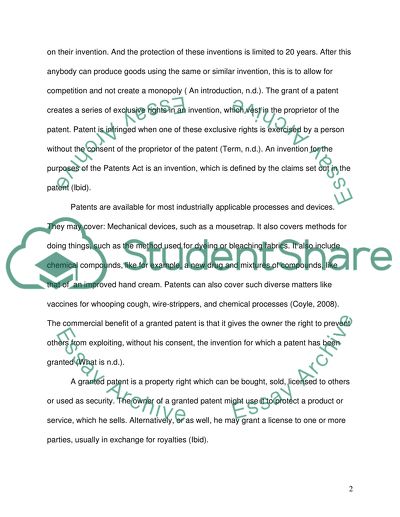Cite this document
(“Patent Law Essay Example | Topics and Well Written Essays - 2000 words”, n.d.)
Retrieved from https://studentshare.org/law/1422036-patent-law
Retrieved from https://studentshare.org/law/1422036-patent-law
(Patent Law Essay Example | Topics and Well Written Essays - 2000 Words)
https://studentshare.org/law/1422036-patent-law.
https://studentshare.org/law/1422036-patent-law.
“Patent Law Essay Example | Topics and Well Written Essays - 2000 Words”, n.d. https://studentshare.org/law/1422036-patent-law.


